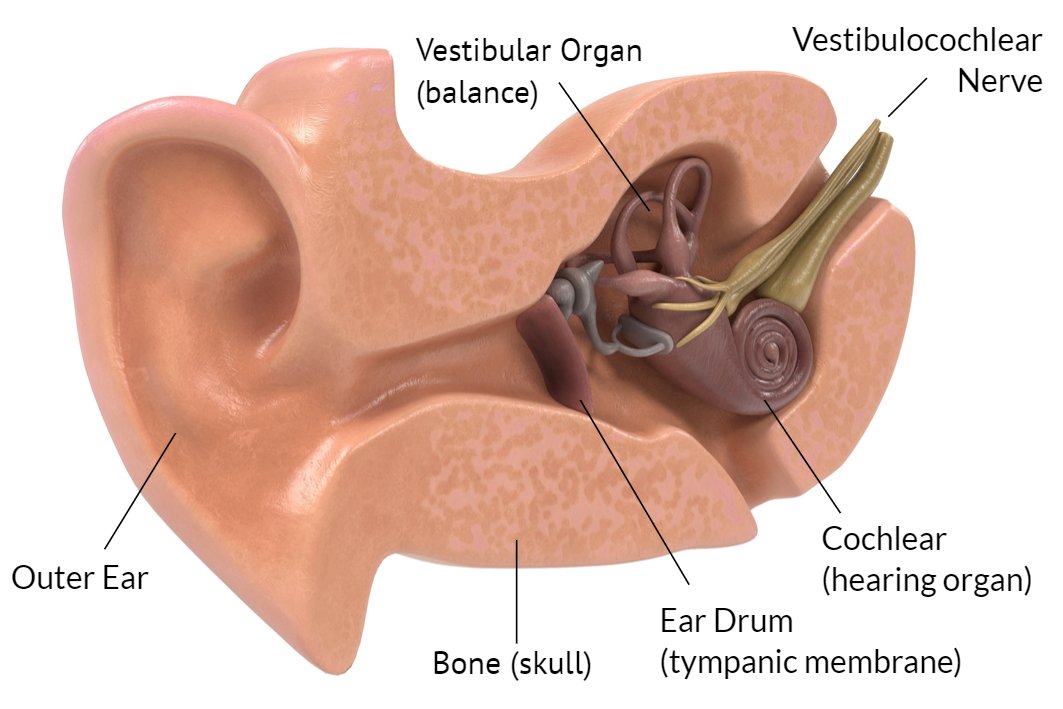Vestibular Physiotherapy
Vestibular physiotherapy is a specific field that focuses on the diagnosis and treatment of vertigo, dizziness and balance conditions related to the inner ear. A vestibular physiotherapist is trained in very specific techniques to help resolve the symptoms related to dizziness and vertigo.
What is the vestibular system?
The vestibular system is made up of the vestibular organ, its connections to the brain, and the parts of the brain that process its signals. The vestibular organ is a part of our inner ear and functions as a sensory system that provides the brain with information about movement, head position and spatial orientation. It is also responsible for keeping our vision stable while the head is moving, as well as maintaining balance.
The vestibular organ contains three semicircular canals, which provide the brain with information regarding angular acceleration (such as tilting or turning the head), as well as two otolithic organs, which provide the brain with information regarding linear acceleration (such as moving forwards/backwards, up/down).
A properly functioning vestibular system is vital to a person’s ability to maintain balance and maintain gaze stability (keeping your eyes fixed on an object).
Common Vestibular Diagnoses
Benign Paroxysmal Positional Vertigo (BPPV): caused by calcium crystals oating in the ear that cause bouts of vertigo on changing positions (e.g. getting out of bed)
Labyrinthitis/Vestibular Neuritis: inflammation of the inner ear
Perilymphatic Fistula: caused by intense pressure in inner ear, or a blow to the head, which results in a hole between middle and inner ear
Acoustic Neuroma (Vestibular Schwannoma): slow-growing tumour of the eighth cranial nerve which can be corrected by surgery
Meniere’s Disease: over-accumulation of fluid in the inner ear that causes attacks of vertigo, ringing in the ear and fluctuant hearing loss
Vestibular Migraine: dizziness associated with the auras of a migraine headache
Peripheral Hypofunction: Loss of balance and dizziness often associated with aging and alcoholism/drug induced ototoxicity
Central Vestibular Disorders: Balance and dizziness following central lesions following events such as stroke or traumatic brain injury
Mal de Debarquement Syndrome: produces disorientation in the aftermath of traveling in a boat, airplane, train or car
Benign Paroxysmal Positional Vertigo (BPPV)
Benign Paroxysmal Positional Vertigo, or BPPV, is a very common cause of dizziness seen and treated by physiotherapists. It is one of the leading causes of vertigo in adults (Bhattacharyya et al 2008) and is very common as we age, thought to occur in up to 50% of vertigo reported by the elderly (Oghalai et al, 2009) and can be the cause of 20% of vertigo seen by General Practitioners in all age groups (Uneri and Turkdogan, 2003).
The symptoms of BPPV are usually quite distinct and are triggered by changes in head position relative to gravity. Typically someone with BPPV will set off their symptoms by a simple movement such as rolling in bed or looking up to hang out the washing or reach for something up high. It is often referred to as “top shelf vertigo”. Symptoms usually have a slight delay of 5-20 seconds between head movement on the onset of vertigo. Episodic vertigo felt by those suffering from BPPV is usually no longer than 60 seconds in duration. It is normal to feel nauseous and a bit “woozy” or off balance in between discrete BPPV episodes.
The cause of BPPV occurs within the inner ear. The inner ear is made up of the cochlea, which is the hearing centre; and the vestibular system which detects rotational, vertical and sideways movements of the head. BPPV occurs when small crystals (otoconia) form and are dislodged (from head trauma, infection, or just age) within the semi-circular canals of the vestibular system. With movements of the head, and incidentally the inner ear, these crystals will move about, giving the incorrect sense that you or the room is spinning.
BPPV can be diagnosed quite simply. Your physiotherapist will take a thorough history of your symptoms and general health. The examination process is not exhaustive.



